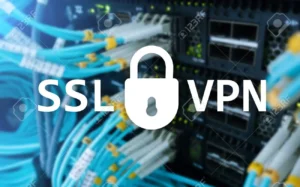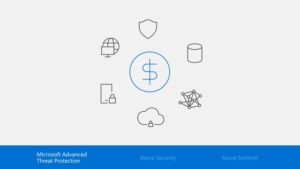IT security is a vital topic, and in this article we offer a detailed guide on how to ensure maximum security with Fortinet Firewall. It covers everything from configuration to best practices for maximizing the protection of your network. Ideal for IT professionals looking to improve their information security skills.
Summary
IT Security and the Role of Firewalls
Fortinet Firewall is an essential tool for information security. In this post, we'll share some good practices and important tips from the manufacturer so that you can get the most out of your firewall."
Maximizing Security with Fortigate Firewall: In this post, we share valuable tips straight from the manufacturer so you can get the most out of your Fortigate Firewall.
Understanding the Fortinet Firewall for IT Security
In the topic 'Understanding Fortinet Firewall for IT Security', we'll take a deep dive into the features and functionalities of this renowned network security system. We'll explain how Fortinet Firewall works, its key capabilities and how it contributes to an effective IT security strategy. In addition, we'll cover the vital role it plays in detecting and preventing cyber threats, helping to protect your IT infrastructure from unwanted intrusions. Whether you're considering Fortinet Firewall for your network environment or you're already using it and want to get more out of it, this segment will provide you with a solid understanding to improve your IT security.
For security reasons, Fortinet suggests NAT mode, as internal networks or DMZs can have secure private addresses. Find out more about Fortinet here.
If you still have doubts about NAT mode, check out this post we've created especially for you.
A valuable tip from Fortinet is to use Virtual Domains (VDOMs) to group related interfaces or VLAN subinterfaces.
The use of VDOMs and transparent mode is especially useful when the network is complex and does not allow changes to the IP addressing scheme.

IT Security Best Practices with Fortinet Firewall
In our segment on IT Security Best Practices with Fortinet Firewall, we'll explore how to optimize the use of this powerful network security system. We'll discuss everything from proper configuration to implementing security policies, as well as recommendations for maintaining the system. Our aim is to provide you with useful insights that will enable you to provide robust network protection, making the most of Fortinet Firewall. Whether you are new to IT security or a seasoned professional, the following tips will be a valuable resource for ensuring that your security practices are in line with the best industry recommendations.
Managing Resources Efficiently
Disable all unnecessary management features. If SSH or SNMP are not necessary for you, it's best to disable them to avoid possible infiltrators.
Put the most commonly used firewall rules at the top of the list of interfaces and only log the traffic you need. Recording logs can slow down performance, especially if it's on an internal hard disk. Fortunately, Fortinet offers alternatives in the cloud or with appliances.
Activating Only Necessary Inspections
In your Fortigate Firewall, activate only the necessary application inspections. Keep alert systems to a minimum. If you send logs to a syslog server, you probably won't need SNMP or e-mail alerts, which will avoid redundant processing.
Establish scheduled FortiGuard updates with reasonable frequency to keep your network security up to date.
Maximizing the Use of the Help Function
The Help function in FortiGate Firewall is an excellent tool for maximizing the performance and security of your network.
According to Fortinet CookbookIn order to display a brief help during command entry, simply press the question mark (?) on the firewall management screen.
- Press the question mark (?) at the command prompt to display a list of available commands and a description of each one.
- Press the question mark (?) after a command keyword to display a list of the objects available with that command and a description of each one.
- If you type in a word or part of a word and press the question mark (?), a list of possible word conclusions or subsequent words will be displayed, along with a description of each one.
Important shortcuts and commands
Know the shortcuts and commands of FortiGate Firewall can save you time and make it easier to manage your network.
| Action | Keys |
| List conclusions of valid words or subsequent words. If there are multiple words that can complete your entry, all possible conclusions will be displayed with a useful description of each one. | ? |
| Complete the word with the next available match. Press the key several times to switch between the available matches. | Tab |
| Recall the previous command. The command history is limited to the current session. | Up arrow, or Ctrl + P |
| Retrieve the next command. | Down arrow, or Ctrl + N |
| Move the cursor left or right within the command line. | Left or right arrow |
| Move the cursor to the beginning of the command line. | Ctrl + A |
| Move the cursor to the end of the command line. | Ctrl + E |
| Move the cursor back one word. | Ctrl + B |
| Move the cursor forward one word. | Ctrl + F |
| Delete the current character. | Ctrl + D |
| Abort current interactive commands, such as when you are entering several lines. If you are not currently inside an interactive command such as config or edit, this terminates the CLI connection. | Ctrl + C |
Knowing Fortigate Firewall well is essential for maximizing your online security and improving the efficiency of your network system. We hope these tips have helped to clarify some of its features. If you still have questions, please contact us or consult the Fortinet's official website.
Sign up for our newsletter to receive more tips and information on network security and Fortinet products.
Learning more about the FortiGate Firewall
For those looking to master the FortiGate Firewall, the Fortinet Network Security Academy is an excellent choice. The academy offers a variety of courses and certifications that can help you better understand and make the most of your FortiGate Firewall.
In addition, there are also many online forums and communities where you can get help and advice from other FortiGate users. These include Fortinet Forum and the subreddit /r/fortinet.
Conclusion
Although the FortiGate Firewall's CLI interface may seem intimidating at first glance, the truth is that, with some practice, you'll find that it offers much more granular and detailed control over your security settings. We hope this guide has given you a good starting point for exploring and harnessing the power that the CLI interface has to offer.
Remember, the FortiGate Firewall is a powerful tool, but it is also just one part of a complete security strategy. To protect your network most effectively, it is important to have comprehensive security policies, regular updates and, above all, a constant commitment to the security of your network.
If you have any further questions or need more information, please feel free to contact us. Our team is always ready to help you.





